Most Cited
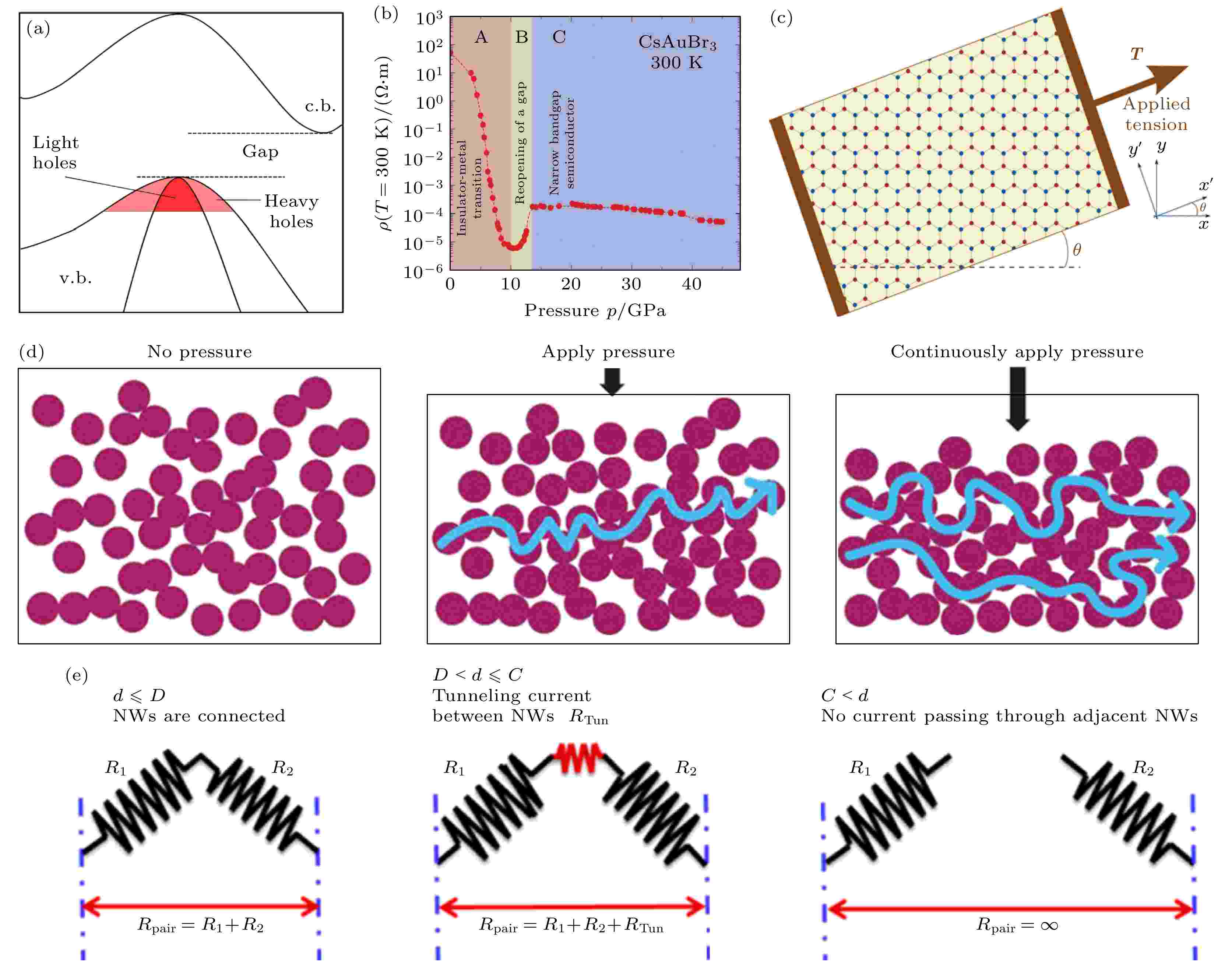
2021, 70 (10): 100703.
doi: 10.7498/aps.70.20210023
Abstract +
In recent years, the flexible piezoresistive pressure sensor has attracted widespread attention due to the trend of improved wearable electronics applied to the field of electronic skin, disease diagnosis, motion detection and health monitoring. Here in this paper, the latest progress of the exploitation of flexible piezoresistive pressure sensors is reviewed in terms of sensing mechanism, selection of sensing materials, structural design and their advanced application. Firstly, the sensing mechanism of piezoresistive pressure sensors is generally introduced from the band structure of semiconductor materials, seepage theory and tunneling effect of conductive polymer composites and changes in interface contact resistance. Based on these sensing mechanisms, various flexible piezoresistive pressure sensors with high sensitivity, broad sensing range and fast response time have been developed. The selection of composition materials and microstructural design in flexible piezoresistive pressure sensor to implement the optimization of sensing performance are emphatically presented in this review. The composition materials including organic polymer material and inorganic nanomaterial based on two-dimensional (2D) materials such as graphene and MXene are intensively exhibited. In addition to the above characteristics, these kinds of pressure sensors exhibit high mechanical reversibility and low detection limit, which is essential for detecting the minor motions like respiratory rate and pulse. Moreover, the well-designed structures applied to the composition analysis are also overviewed, such as the sea urchin-like structure, spongy porous structure and regular structure. Various designed structures provide further properties like stability for the flexible pressure sensor. However, comparing with traditional pressure sensor, the mass production and application of flexible pressure sensor are confronting several barriers, like the high cost of raw materials and relatively complex manufacturing processes. How to achieve the low cost and low energy consumption simultaneously on the basis of excellent performance is still a challenge to expanding the applications of flexible pressure sensor. Novel sensing mechanism, functional materials and synthetic integration are expected to be developed in the future. And also, the potential application of flexible pressure sensor will be further expanded after endowing it with more functions.
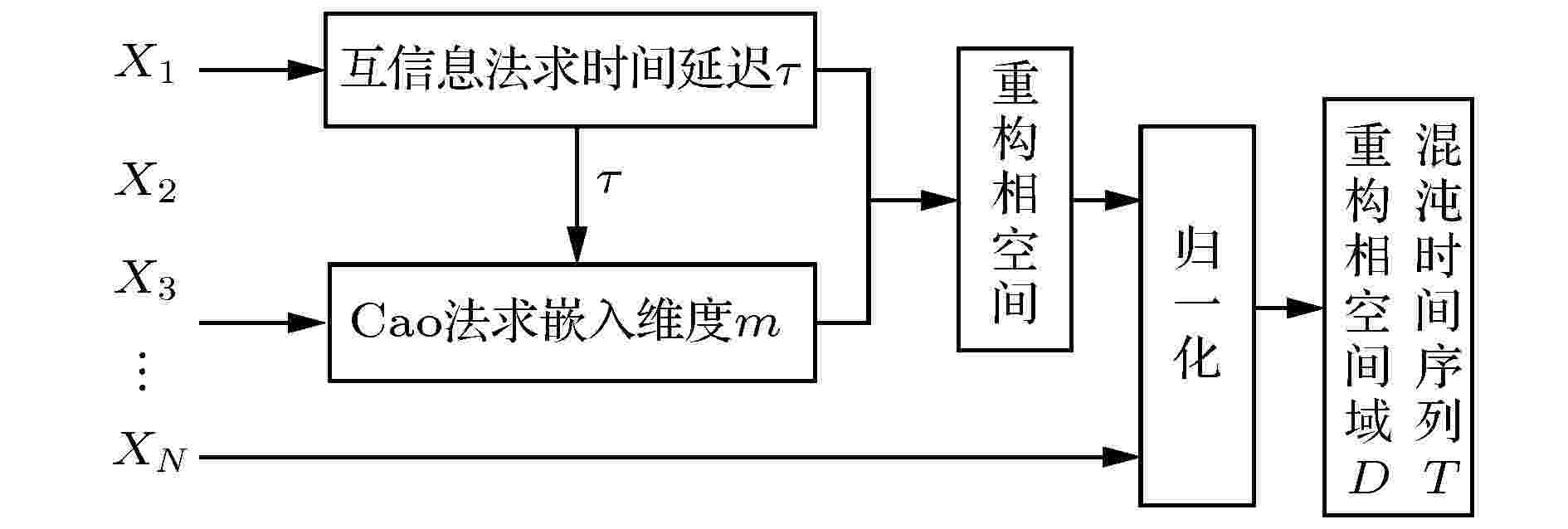
2021, 70 (1): 010501.
doi: 10.7498/aps.70.20200899
Abstract +
Chaotic time series forecasting has been widely used in various domains, and the accurate predicting of the chaotic time series plays a critical role in many public events. Recently, various deep learning algorithms have been used to forecast chaotic time series and achieved good prediction performance. In order to improve the prediction accuracy of chaotic time series, a prediction model (Att-CNN-LSTM) is proposed based on hybrid neural network and attention mechanism. In this paper, the convolutional neural network (CNN) and long short-term memory (LSTM) are used to form a hybrid neural network. In addition, a attention model with softmax activation function is designed to extract the key features. Firstly, phase space reconstruction and data normalization are performed on a chaotic time series, then convolutional neural network (CNN) is used to extract the spatial features of the reconstructed phase space, then the features extracted by CNN are combined with the original chaotic time series, and in the long short-term memory network (LSTM) the combined vector is used to extract the temporal features. And then attention mechanism captures the key spatial-temporal features of chaotic time series. Finally, the prediction results are computed by using spatial-temporal features. To verify the prediction performance of the proposed hybrid model, it is used to predict the Logistic, Lorenz and sunspot chaotic time series. Four kinds of error criteria and model running times are used to evaluate the performance of predictive model. The proposed model is compared with hybrid CNN-LSTM model, the single CNN and LSTM network model and least squares support vector machine(LSSVM), and the experimental results show that the proposed hybrid model has a higher prediction accuracy.
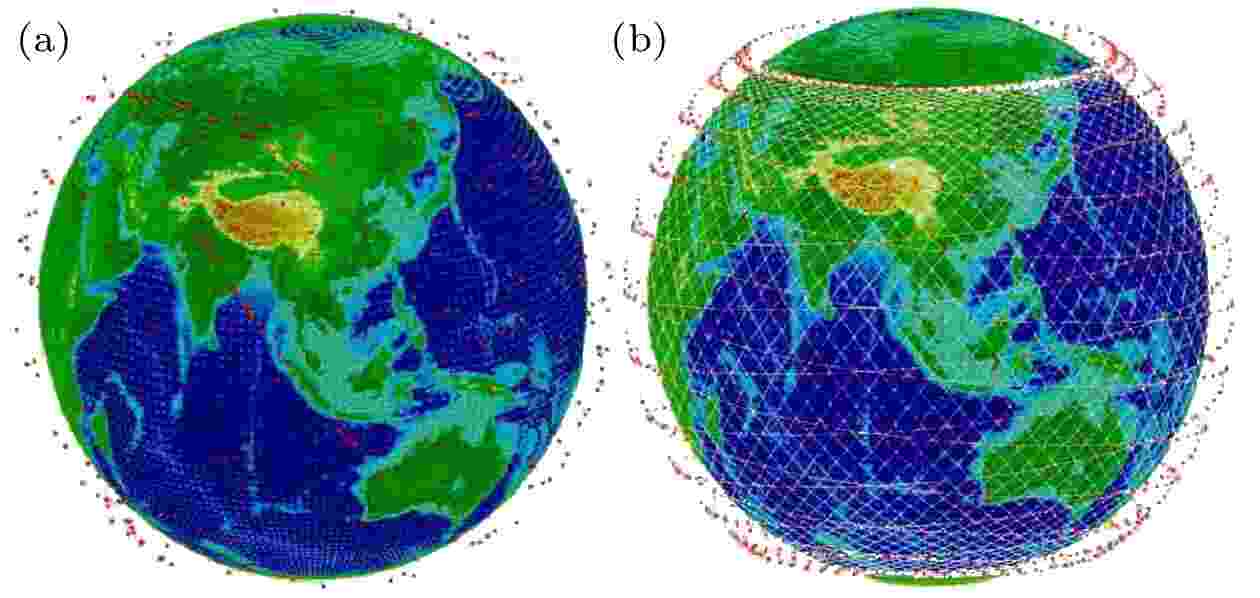
2021, 70 (24): 244303.
doi: 10.7498/aps.70.20211729
Abstract +
The future sixth-generation (6G) wireless network has advantages of global coverage, high spectrum efficiency, low cost, high safety, and higher intelligent level. The 6G technology can create ubiquitous intelligent mobile networks for human society. Terahertz wireless communication has the characteristics of high data transmission rate, low delay, and anti-interference, which may be widely used in 6G technology. This paper mainly introduces the planning vision, development status, and key 6G technology, and analyzes the terahertz devices, channels, communication systems, and the possible development trend of 6G technology.
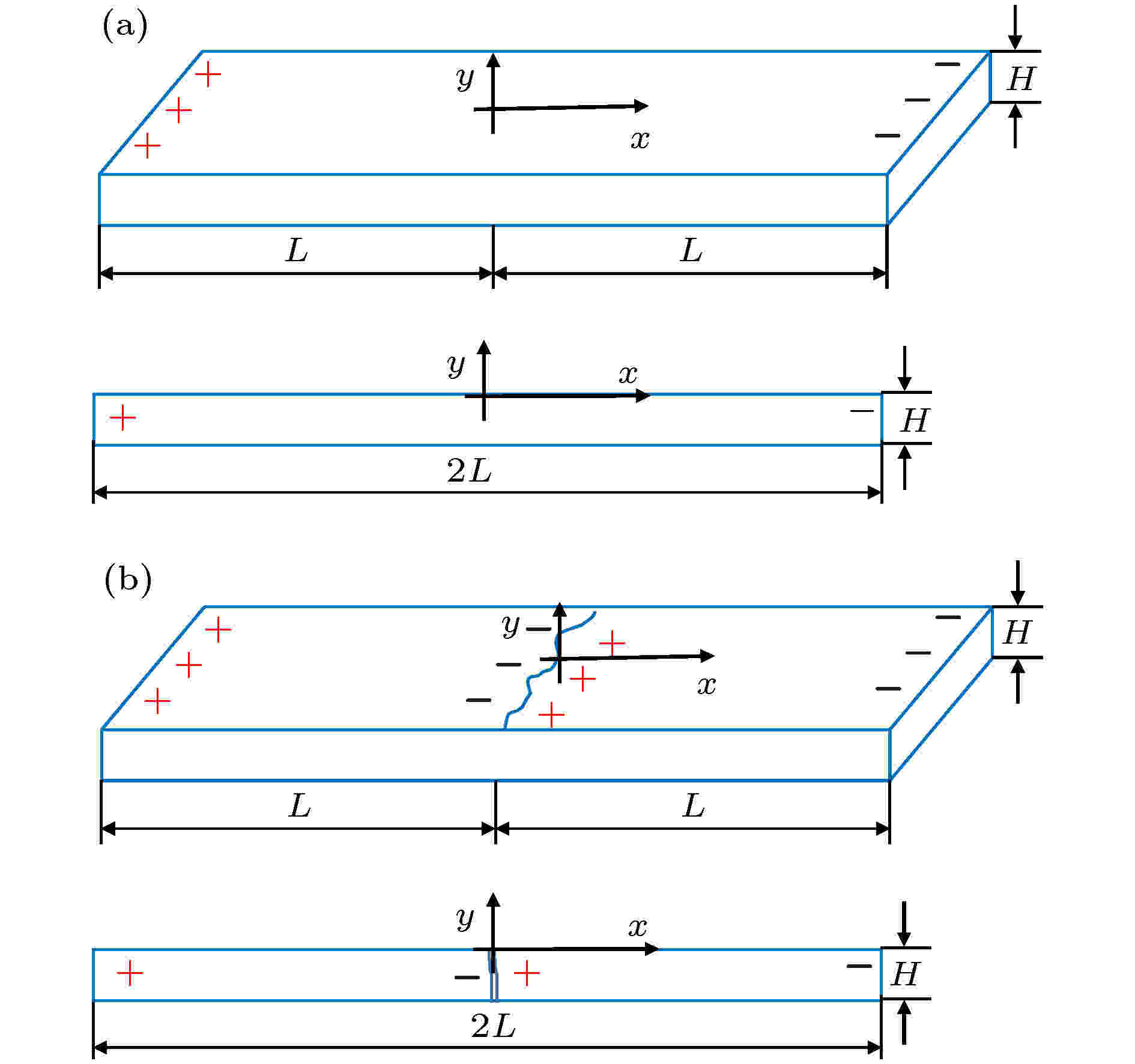
2021, 70 (3): 034101.
doi: 10.7498/aps.70.20200937
Abstract +
Magnetic dipole theory has been widely and successfully used to explain the leakage magnetic field signals. Because the model parameter such as magnetic dipole density is not easy to quantify, magnetic dipole theory often needs normalizing in application, which is considered to be unsuitable for quantitatively analyzing the magnetic memory signals with the stress effect. In this paper, the theoretical model of magneto-mechanical coupling magnetic dipole is established, which is suitable for analyzing the stress effect on magnetic signals in magnetic memory testing method. Based on the ferromagnetic theory, the equivalent field under the combined action of the applied load and the magnetic field is determined. And then, the magneto-mechanical analytical model is obtained for the isotropic ferromagnetic material under the weak magnetic field based on the first-order magnetization approximation in the weak magnetization state. Under the assumptions of rectangular and V-shaped magnetic charge distribution for the two-dimensional magnetic signal problem, the theoretical analytical models of the magnetic memory signals from the smooth and cracked specimens, and the analytical models of the magnetic memory signal induced by the rectangular and V-shaped surface defect are established. Based on the analytical solution of the proposed magneto-mechanical magnetic dipole theory, the difference in signal between before and after the failure of the specimen, the signal from the rectangular and V-shaped defect, and other influencing factors and laws of the magnetic signal are analyzed in detail. In particular, the influence of stress, environmental magnetic field, defect morphology and size, lift-off effect, specimen size and other factors on magnetic memory signals can be described based on the analytical solution of magneto-mechanical magnetic dipole models proposed in this paper. The proposed analytical model of magneto-mechanical magnetic dipole in this paper is simple and easy to use, and the present research shows that the proposed analytical solution in this paper can explain some basic experimental phenomena and laws in magnetic memory testing experiments. In addition, the precise magneto-mechanical coupling quantitative model combined with the finite element analysis method is still needed for accurately analyzing the magnetic memory signals in experiment.
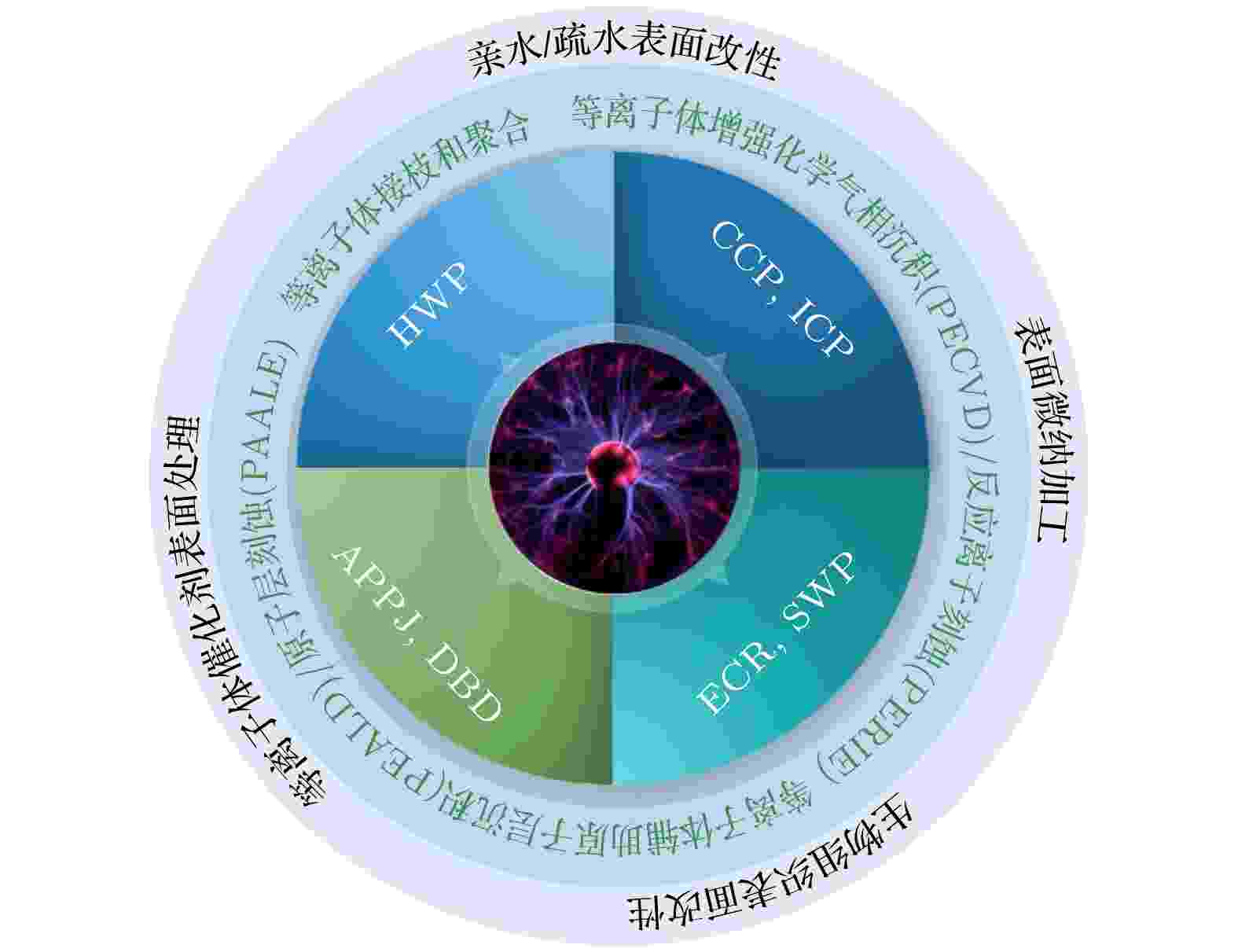
2021, 70 (9): 095203.
doi: 10.7498/aps.70.20202233
Abstract +
Plasma technology plays an important role in preparing and processing materials nowadays. This review focuses on the applications of non-thermal plasma (NTP) in the surface treatment and functionalization of materials, including the plasma sources for generating plasmas, NTP techniques and specific application fields. The plasma sources include inductively coupled plasma, capacitively coupled plasma, electron cyclotron resonance plasma, surface wave plasma, helicon wave plasma, atmospheric pressure plasma jet, and dielectric barrier discharge plasma. The NTP techniques for material surface treatment and functionalization include plasma surface grafting and polymerization, plasma enhanced chemical vapor deposition, plasma assisted atomic layer deposition, plasma enhanced reactive ion etching, and plasma assisted atomic layer etching. Specific applications of plasma surface treatment and functionalization cover hydrophilic/hydrophobic surface modification, surface micro-nano processing, biological tissue surface treatment, and catalyst surfaces treatment. Finally, the application prospects and development trends of NTP technology for material surface treatment and functionalization are proposed.

2021, 70 (1): 018502.
doi: 10.7498/aps.70.20202131
Abstract +
Superconductivity is a macroscopic quantum phenomenon. Flux quantization and the Josephson effect are two physical phenomena which can best reflect the macroscopic quantum properties. Superconducting quantum interference device (SQUID) is one type of superconducting devices which uses these two characteristics. SQUID devices are widely used in the sensitive detection of magnetic signals. This paper briefly introduces the background and recent developments of low temperature superconductor and high temperature superconductor SQUID devices.
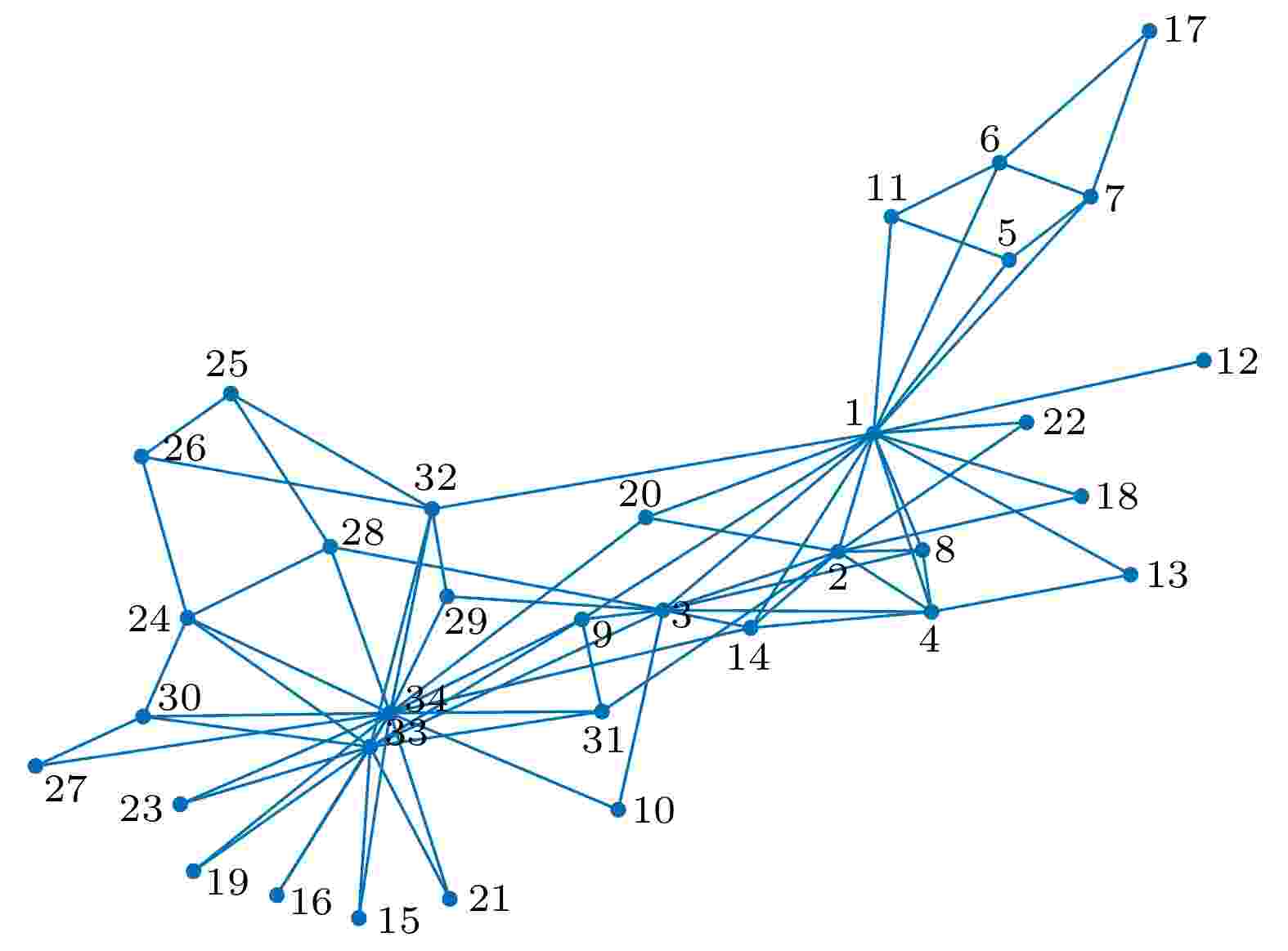
2021, 70 (21): 216401.
doi: 10.7498/aps.70.20210979
Abstract +
Evaluating the importance of nodes in complex networks is an important topic in the research of network characteristics. Its relevant research has a wide range of applications, such as network supervision and rumor control. At present, many methods have been proposed to evaluate the importance of nodes in complex networks, but most of them have the deficiency of one-sided evaluation or too high time complexity. In order to break through the limitations of existing methods, in this paper a novel method of evaluating the importance of complex network nodes is proposed based on Tsallis entropy. This method takes into account both the local and global topological information of the node. It considers the structural hole characteristics and K-shell centrality of the node and fully takes into account the influence of the node itself and its neighboring nodes. To illustrate the effectiveness and applicability of this method, eight real networks are selected from different fields and five existing methods of evaluating node importance are used as comparison methods. On this basis, the monotonicity index, SIR (susceptible-infectious-recovered) model, and Kendall correlation coefficient are used to illustrate the superiority of this method and the relationship among different methods. Experimental results show that this method can effectively and accurately evaluate the importance of nodes in complex networks, distinguish the importance of different nodes significantly, and can show good accuracy of evaluating the node importance under different proportions of nodes. In addition, the time complexity of this method is $ O({n^2}) $ , which is suitable for large-scale complex networks.
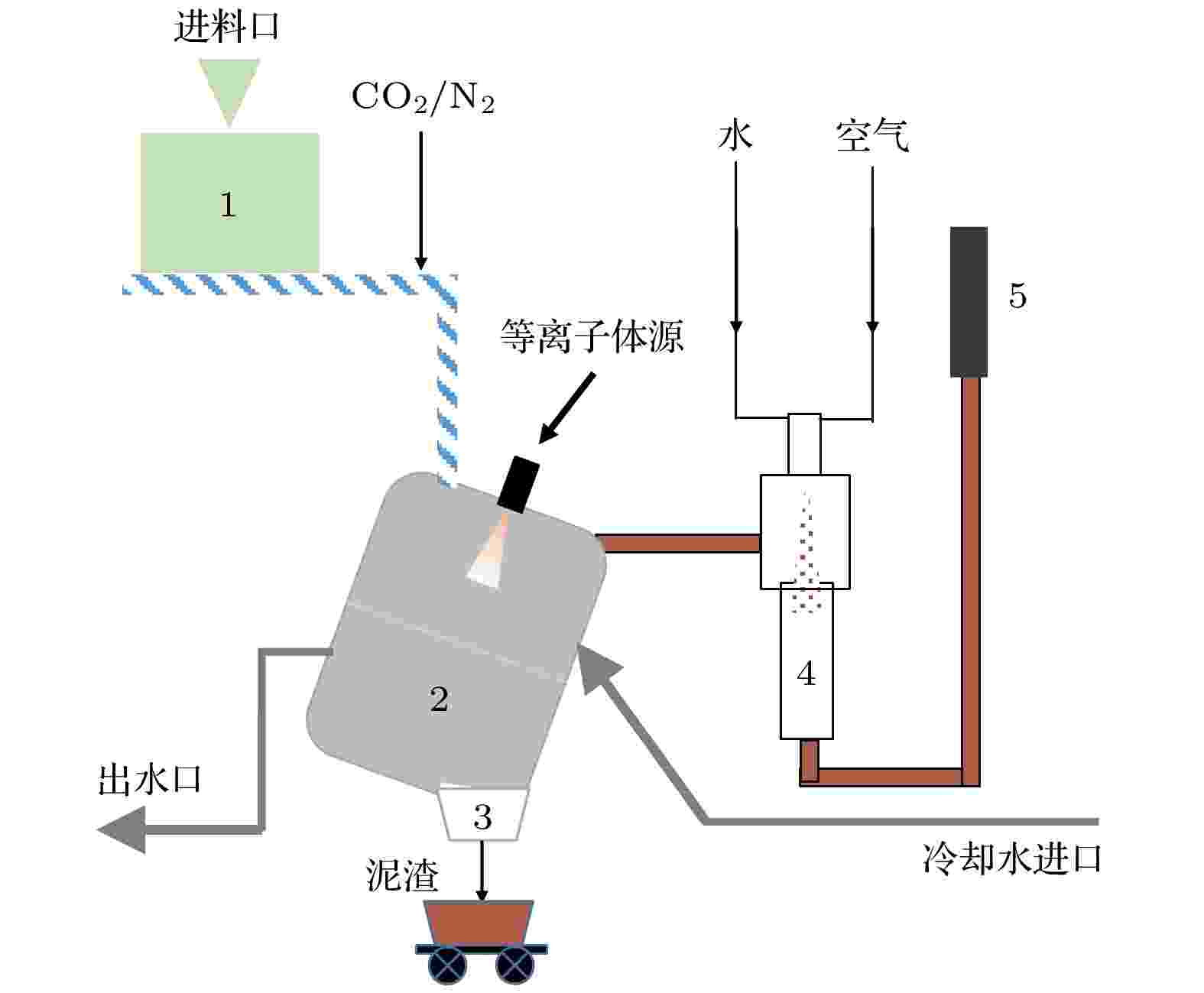
2021, 70 (9): 095210.
doi: 10.7498/aps.70.20201676
Abstract +
The rapid development of social economy leads the output of solid waste to increase rapidly. The traditional treatment methods, such as landfilling, incineration and composting, are not only inefficient, but also have many limitations, such as secondary pollution and waste of resources. Therefore, it is urgent to explore new solid waste treatment technology. Due to its high efficiency, environmental protection and high energy conversion, the plasma gasification technology has been applied to the harmless treatment of solid waste. This article introduces the background and significance of plasma gasification technology in solid waste treatment, and summarizes the application of plasma gasification technology to different solid waste treatments, the technical level and research progress of plasma gasification of solid waste in the world are described in detail, and the existing problems in the current application of plasma gasification of solid waste are emphatically analyzed. It is pointed out that plasma gasification technology is an effective way to treat solid waste.
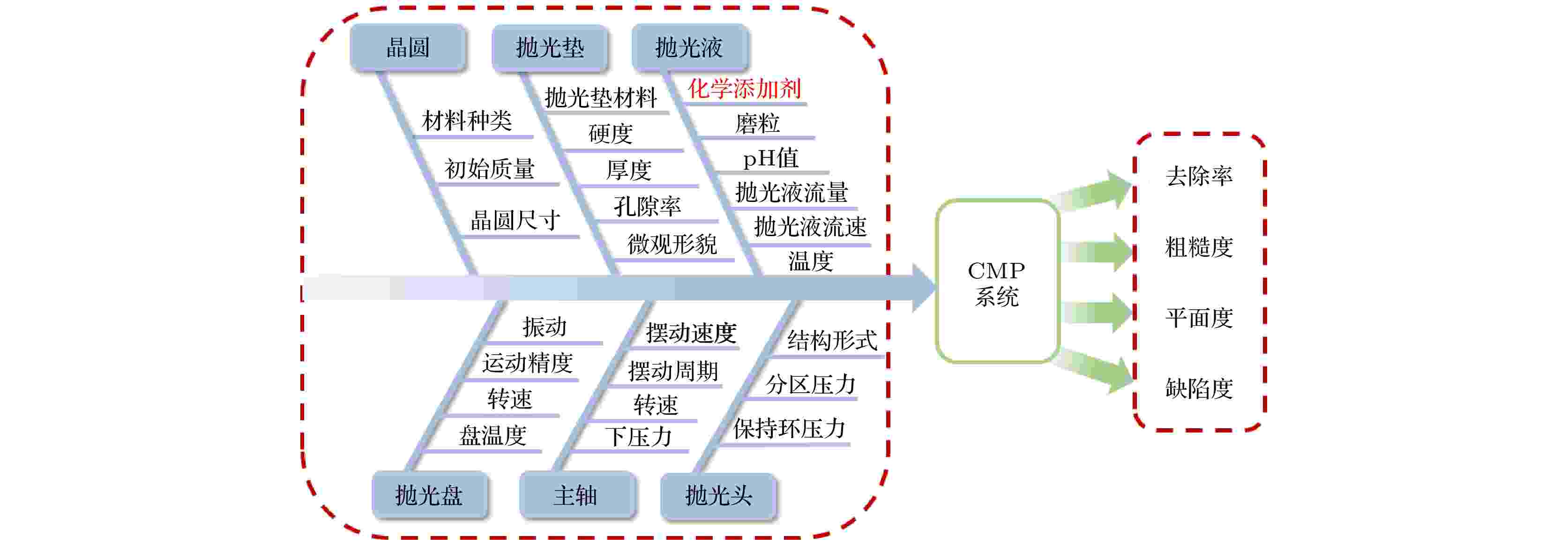
2021, 70 (6): 068101.
doi: 10.7498/aps.70.20201917
Abstract +
Atomic-scale fabrication is an effective way to realize the ultra-smooth surfaces of semiconductor wafers on an atomic scale. As one of the crucial manufacturing means for atomically precise surface of large-sized functional materials, chemical mechanical polishing (CMP) has become a key technology for ultra-smooth and non-damage surface planarization of advanced materials and devices by virtue of the synergetic effect of chemical corrosion and mechanical grinding. It has been widely used in aviation, aerospace, microelectronics, and many other fields. However, in order to achieve ultra-smooth surface processing at an atomic level, chemical corrosion and mechanical grinding methods commonly used in CMP process require some highly corrosive and toxic hazardous chemicals, which would cause irreversible damage to the ecosystems. Therefore, the recently reported green chemical additives used in high-performance and environmentally friendly CMP slurry for processing atomically precise surface are summarized here in this paper. Moreover, the mechanism of chemical reagents to the modulation of materials surface properties in the CMP process is also analyzed in detail. This will provide a reference for improving the surface characteristics on an atomic scale. Finally, the challenges that the polishing slurry is facing in the research of atomic-scale processing are put forward, and their future development directions are prospected too, which has profound practical significance for further improving the atomic-scale surface accuracy.
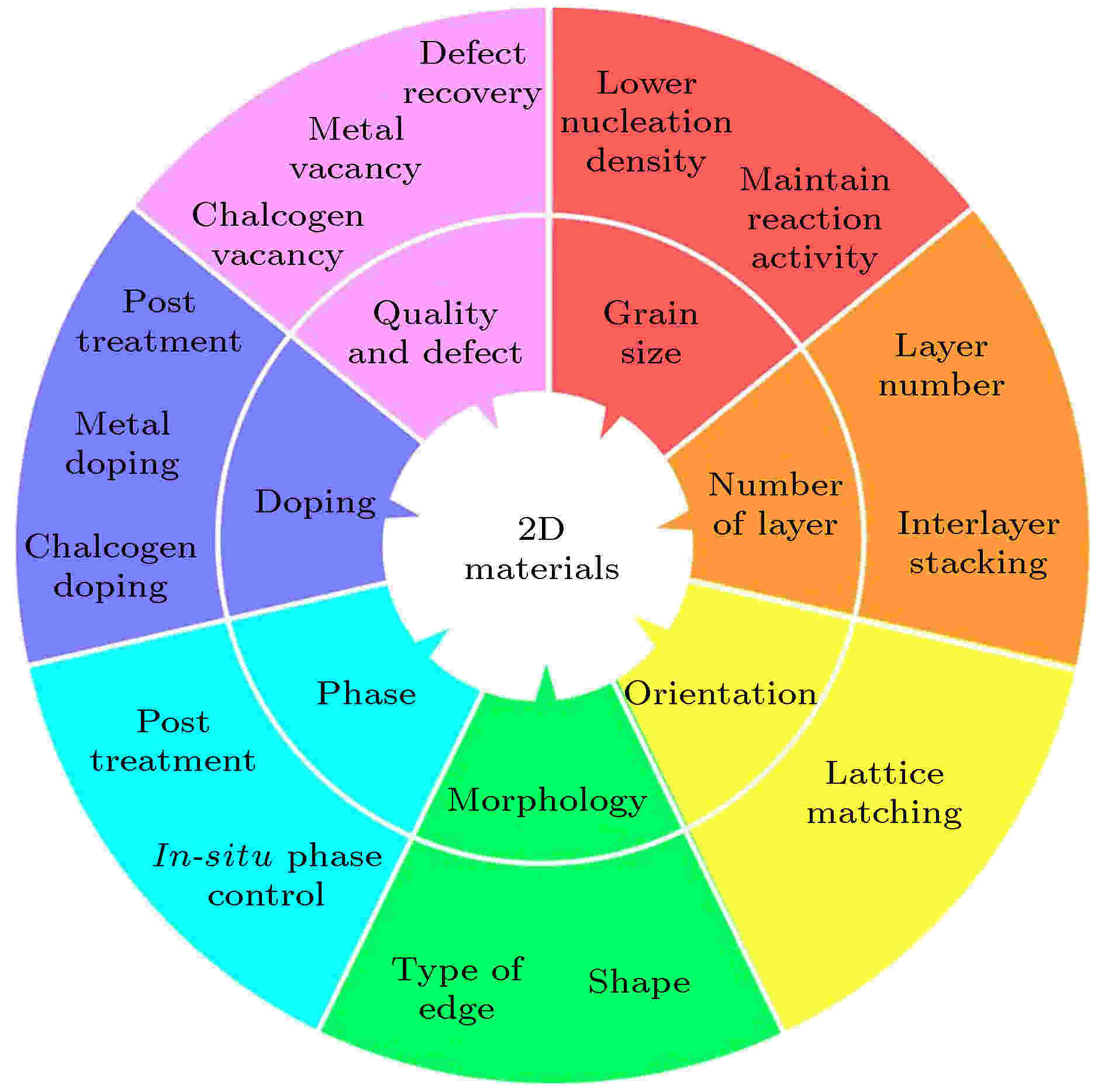
Chemical vapor deposition growth of large-areas two dimensional materials: Approaches and mechanisms
2021, 70 (2): 026802.
doi: 10.7498/aps.70.20201398
Abstract +
Two-dimensional (2D) layered materials have attracted increasing attention in recent years because of their abundant material categories and superior physical/chemical properties. In order to satisfy the requirements for highly integrated devices in the post-Moore era, substantial efforts have been devoted to producing atomically thin 2D materials with large lateral dimensions and high crystalline quality. The controllable synthesis is the precondition of the implementation of large mass producing 2D material in industry. Chemical vapor deposition (CVD) is a powerful method widely used in the synthesis of 2D materials and their hybrid structures. However, it is still challengeable to flexibly and easily grow any 2D materials into large area. Therefore, a systematic understanding of the requirements for controllable growth of different 2D materials are desired. In this review article, we provide a comprehensive discussion on the influencing factors, material transport, nucleation and growth rate in the CVD growth process. Finally, the strategies to further improve the size and quality of 2D materials are prospected.

2021, 70 (1): 018501.
doi: 10.7498/aps.70.20202121
Abstract +
It has been nearly 110 years since the discovery of superconductors, and more than 30 years since the discovery of high temperature superconductors (HTS). Great progress has been made in the application of superconducting electronics in the last two decades. HTS microwave devices have shown much higher perfomance than the traditional ones and have found their ways to the industry applications in mobile communication, radar, and special communication applications. Owing to the ultrahigh sensitivity to magnetic fields and currents, superconducting quantum interference devices (SQUIDs) have been used as the irresplacible sensors in geological surveying, magnetic resonanc imaging, biomagnetic imaging, and other areas. The sensitivity of superconducting radiation detectors such as superconducting SIS mixer, superconducting hot electron bolometer, superconducting transition edge sensor, superconducting nanowire single photon detector, and superconducting microwave kinetic inductance detector are near the quantum limitation. They are now key technology in geophysics, astrophysics, quantum information science, biomedicine, and so on. Superconducting Josephson parametric amplifier has become a key element for superconducting quantum computing. Superconducting integrated circuit has been included in the international roadmap for devices and systems, and shows that having the potential to become one of the mainstreams for post-Moore information processing technology. In metrology, superconducting Josephson effect and Josephson junction array devices have been widely used in the redefinition of quantum voltage reference and basic units of the International system of Units. Superconducting electronics plays an important role in the current quantum information technology boom, which in turn promotes the development of superconducting electronics. This review will brief introduce the research and application of superconducting electronics in China in recent years.

2021, 70 (5): 054702.
doi: 10.7498/aps.70.20201384
Abstract +
In order to study the breakup process of liquid jet in gas film, the backlit photography technique and the VOF TO DPM method are used for experimental and simulation research respectively. Water and air are used as simulant media. Grid adaptive technology is used to refine the gas-liquid interface grid and improve the capture accuracy of the gas-liquid interface. The results show that there are two main breakup processes of liquid jet in gas film: column breakup and surface breakup. The local high-pressure zone in front of the liquid jet makes the jet have a large normal velocity gradient, which causes R-T instability. The surface wave that is generated by the R-T instability is mainly responsible for the liquid column breakup. When the thin liquid film reaches a column breakup point, the airflow penetrating the trough of the surface wave causes the jet column to break. The tangential velocity gradient is generated when the gas film bypasses the liquid jet surface, which causes K-H instability. The K-H surface waves cause ligaments and droplets to strip from the surface of the liquid jet. The local momentum ratio has an important influence on the breakup process of the liquid jet in gas film. When the local momentum ratio is low, the breakup of liquid jet is dominated by the K-H instability. As the local momentum ratio increases, the breakup of liquid jet is gradually dominated by R-T instability. The local momentum ratio plays an important role in the distribution range of the liquid jet in gas film. When the local momentum ratio is low, the ligaments and droplets caused by the liquid jet are mainly distributed within the range of gas film. As the local momentum ratio increases, part of the ligaments and droplets escape from the range of the gas film. The liquid jet penetrates the gas film when the local momentum ratio is greater than 0.74. The breakup length and the penetration depth are both affected by the local momentum ratio. The breakup length increases with the local momentum ratio increasing. The penetration depth also increases with the local momentum ratio, and the penetration depth increases significantly when the liquid jet penetrates the gas film.

2021, 70 (16): 160702.
doi: 10.7498/aps.70.20210685
Abstract +
Laser spectroscopy based techniques have the advantages of high sensitivities, high selectivities, non-invasiveness and in situ, real-time observations. They are widely used in numerous fields, such as environmental monitoring, life science, medical diagnostics, manned space flight, and planetary exploration. Owing to the merits of low cost, compact volume and strong environment adaptability, quartz-enhanced photoacoustic spectroscopy (QEPAS) based sensing is an important laser spectroscopy-based method of detecting the trace gas, which was invented in 2002. Detection sensitivity is a key parameter for gas sensors because it determines their real applications. In this paper, focusing on the detection sensitivity, the common methods for QEPAS are summarized. High power laser including amplified diode laser by erbium doped fiber amplifier (EDFA), and quantum cascade laser are used to improve the excitation intensity of acoustic wave. The absorption line of gas molecules located at the fundamental bands of mid-infrared region is adopted to increase the laser absorption strength. Micro-resonator is employed to enhance the generated acoustic pressure by forming a standing wave cavity. Quartz tuning forks (QTFs) with low resonant frequency are used to increase the accumulation time of acoustic energy in itself. Multi-pass strategy is utilized to amplify the action length between laser beam and target gas in the prongs of QTF. The advantages and disadvantages of the above methods are discussed respectively. For the issues in real applications, the all-fiber strucure in near-infared region and mid-infrared region and miniaturization using three-dimensional(3D) printing technique for QEPAS sensor are summarized. A QEPAS technique based multi-gas sensor is used to quantify the concentration of carbon monoxide (CO), carbon dioxide (CO2), hydrogen cyanide (HCN), and hydrogen chloride (HCl) for post-fire cleanup aboard spacecraft, which is taken for example for the real application.Finally, the methods of further improving the sensitivity of QEPAS sensor are proposed.
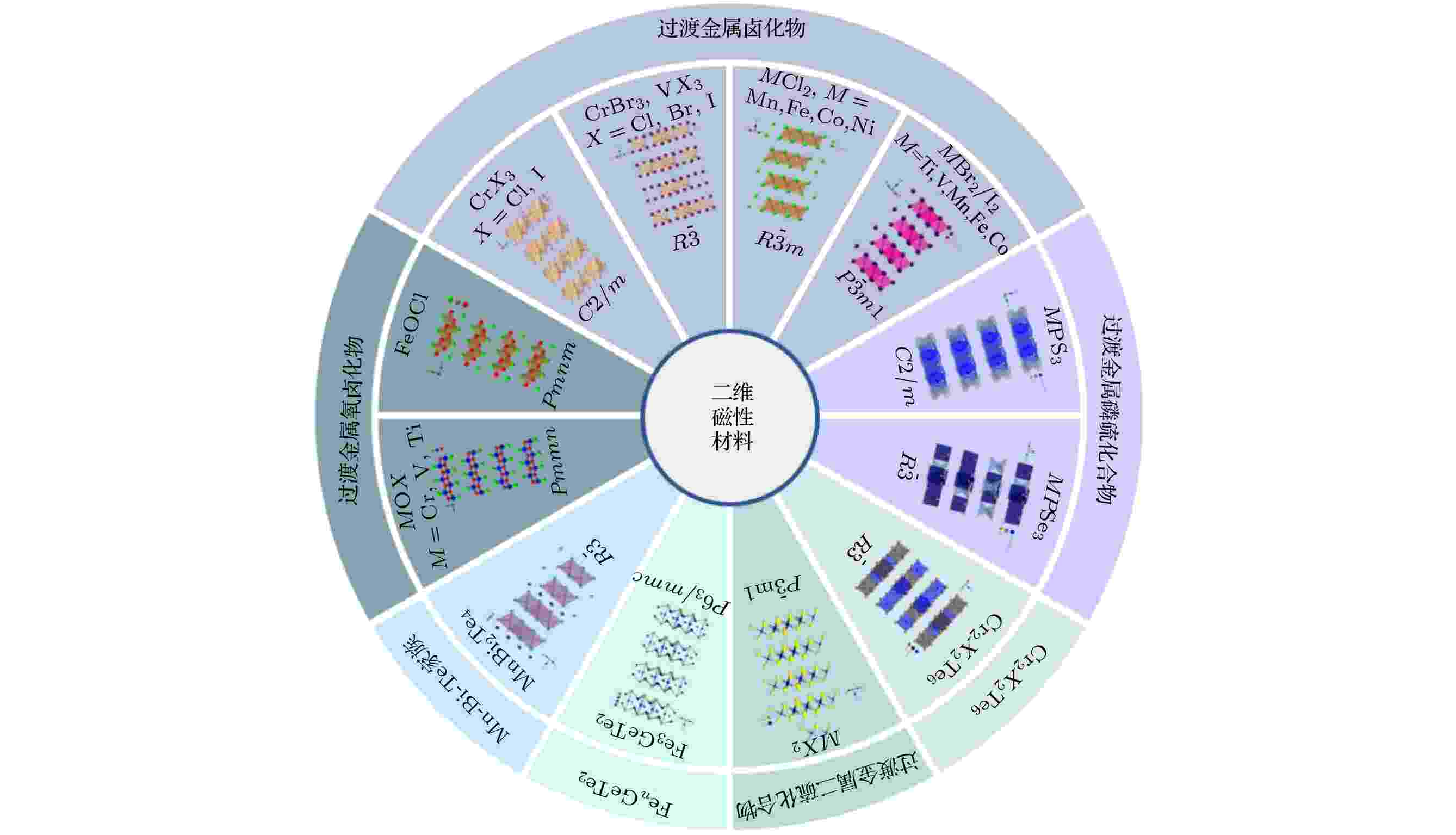
2021, 70 (12): 127801.
doi: 10.7498/aps.70.20202146
Abstract +
Two-dimensional (2D) materials represented by graphene and molybdenum disulfide (MoS2) have attracted much attention in recent years due to their advantages in electrical, thermal, optical and mechanical properties. As a branch of 2D materials, 2D magnetic materials have special properties such as magnetic anisotropy and single-layer magnetic order. Especially, their magnetism can also be controlled by a variety of physical fields, and it possesses various physical properties and potential applications. Therefore, they have received widespread attention of researchers gradually. In this article, we summarize the types, synthesis methods, basic characteristics and characterization methods of 2D magnetic materials in detail, and the magnetism controlling of 2D magnetic materials as well. Finally, a simple outlook on the research directions and future challenges of 2D magnetic materials is given.

2021, 70 (23): 230302.
doi: 10.7498/aps.70.20211255
Abstract +
In recent years, image encryption technology has attracted much attention. As people pay more attention to communication privacy and network security, the requirements for information encryption technology are more stringent. As one of the information carriers, images are valuable for carrying the effectiveness and vividness of the information. This paper proposes a color image encryption algorithm based on DNA encoding and alternating quantum random walk. Quantum random walk is an excellent cryptographic tool that participates in all parts of the algorithm process, and DNA encoding is used as the core encryption method to complete the algorithm. This article describes the encryption and decryption process in detail, and conducts simulation experiments to verify and analyze the results of the proposed algorithm. In the simulation stage, we design the simulation key parameters, encode the color image encryption and decryption experiments, and carry out related analysis. The experimental results show that the color image encryption algorithm proposed in this paper can perform safe and effective color image encryption. The correlation analysis shows that the image histogram after encryption is stable, the pixel correlation coefficient approaches 0, and the key space is ${2^{ 128 }} $ , the three-channel information entropy reaches more than 7.997, which can resist statistical attacks, brute force attacks and other attack methods. In addition, DNA coding has unique biological characteristics in addition to the novel coding and calculation methods, which provide new ideas and directions for cryptographic research.

2021, 70 (23): 230502.
doi: 10.7498/aps.70.20210561
Abstract +
To improve the security of image encryption in singular chaotic systems, an encryption algorithm based on deep-learning is proposed in this paper. To begin with, the chaos sequence is generated by using a hyperchaotic Lorenz system, prior to creating new chaotic signals based on chaotic characteristics obtained from he simulations of the powerful complex network structure of long-short term memory artificial neural network (LSTM-ANN). Then, dynamic characteristics of the new signals are analyzed with the largest Lyapunov exponent, 0-1 test, power spectral analysis, phase diagrams and NIST test. In the end, the new signals are applied to image encryption, the results of which verify the expected increased difficulty in attacking the encrypted system. This is attributable to the differences of the new signals generated using the proposed method from the original chaotic signals, as well as arises from the high complexity and nonlinearity of the system. Considering its ability to withstand common encryption attacks, it is hence reasonable to conclude that the proposed method exhibits higher safety and security than other traditional methods.

2021, 70 (10): 106801.
doi: 10.7498/aps.70.20201918
Abstract +
Liquid droplets impacting on the solid surface is an ubiquitous phenomenon in natural, agricultural, and industrial processes. The maximum spreading diameter of a liquid droplet impacting on a solid surface is a significant parameter in the industrial applications such as inkjet printing, spray coating, and spray cooling. However, former models cannot accurately predict the maximum spreading diameter on a superhydrophilic surface, especially under low Weber number (We). In this work, the spreading characteristics of a water droplet impacting on a superhydrophilic surface are explored by high-speed technique. The spherical cap of the spreading droplet, gravitational potential energy, and auxiliary dissipation are introduced into the modified theoretical model based on the energy balance. The model includes two viscous dissipation terms: the viscous dissipation of the initial kinetic energy and the auxiliary dissipation in spontaneous spreading. The energy component analysis in the spreading process shows that the kinetic energy, surface energy, and gravitational potential energy are all transformed into the viscous dissipation on the superhydrophilic surface. The transformation of surface energy into viscous dissipation is dominant at lower We while the transformation of kinetic energy into viscous dissipation is dominant at higher We. It is found that the gravitational potential energy and auxiliary dissipation play a significant role in spreading performance at low We according to the energy component analysis. Moreover, the energy components predicted by the modified model accord well with the experimental data. As a result, the proposed model can predict the maximum spreading diameter of a droplet impacting on the superhydrophilic surface accurately. Furthermore, the model proposed in this work can predict the maximum spreading diameter of the droplet impacting on the hydrophilic surface and hydrophobic surface. The results of this work are of great significance for controlling droplet spreading diameter in spray cooling and falling film evaporation.
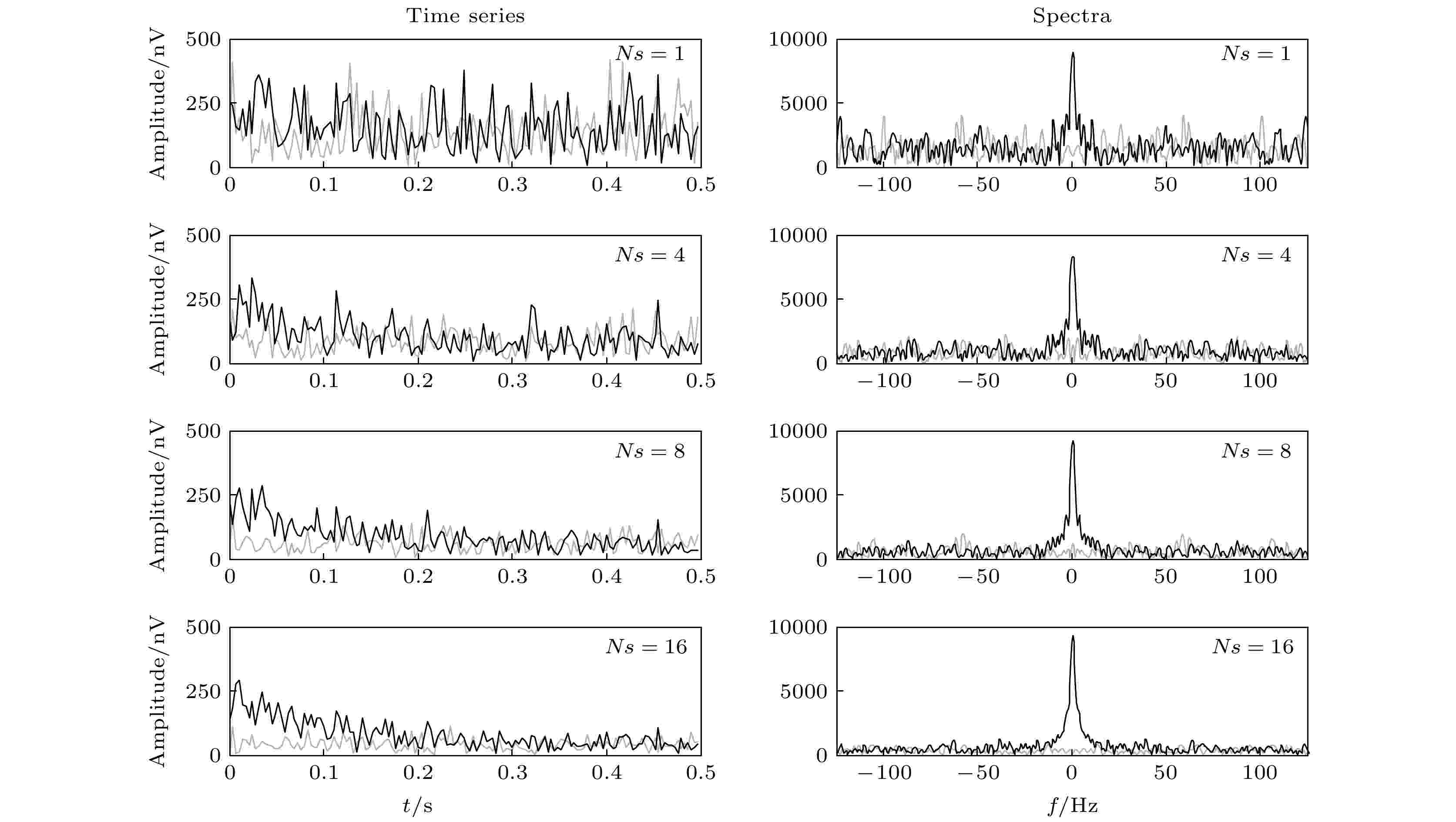
2021, 70 (16): 163303.
doi: 10.7498/aps.70.20202044
Abstract +
Magnetic resonance sounding (MRS) has the advantage of detecting groundwater content directly without drilling, but the signal-to-noise ratio (SNR) is extremely low which limits the application of the method. Most of the current researches focus on eliminating spikes and powerline harmonic noise in the MRS signal, whereas the influence of random noise cannot be ignored even though it is difficult to suppress due to the irregularity. The common method to eliminate MRS random noise is stacking which requires extensive measurement repetition at the cost of detection efficiency, and it is insufficient when employed in a high-level noise surrounding. To solve this problem, we propose a modified short-time Fourier transform(MSTFT) method, in which used is the short-time Fourier transform on the analytical signal instead of the real-valued signal to obtain the high-precision time-frequency distribution of MRS signal, followed by extracting the time-frequency domain peak amplitude and peak phase to reconstruct the signal and suppress the random noise. The performance of the proposed method is tested on synthetic envelope signals and field data. The using of the MSTFT method to handle a single recording can suppress the random noise and extract MRS signals when SNR is more than –17.21 dB. Compared with the stacking method, the MSTFT achieves an 27.88dB increase of SNR and more accurate parameter estimation. The findings of this study lay a good foundation for obtaining exact groundwater distribution by utilizing magnetic resonance sounding.
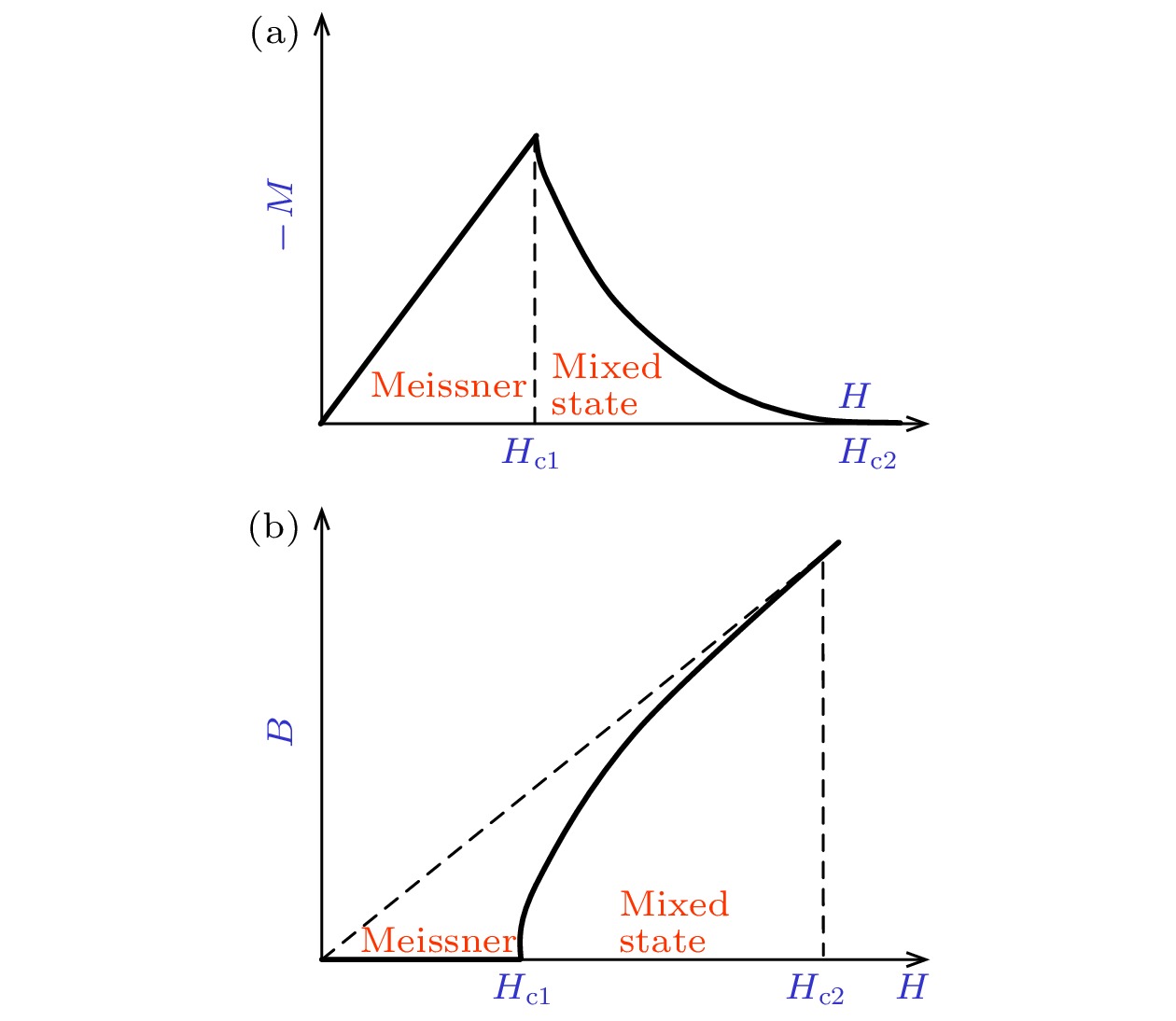
2021, 70 (1): 017405.
doi: 10.7498/aps.70.20201881
Abstract +
Superconductivity is achieved through macroscopic phase coherence; the charge carriers are Cooper pairs. In absence of an external magnetic field and applied current, the behavior of these Cooper pairs can be described by a single wave function $ \psi = {\psi _{\rm{0}}}{e^{i\varphi }}$ , and the phase is uniform over the space. When applying an external field but still below a certain threshold, a screening current will be established at the surface, which prohibits the entering of magnetic field, that is so-called Meissner effect. When the external field is larger than this threshold, the magnetic flux will penetrate into the sample, forming the interface of superconducting and normal state regions. According to the sign of this interface energy, we can categorize superconductors into type-I (positive interface energy) and type-II (negative interface energy). Most superconductors found so far are type-II in nature. Due to the negative interface energy in type-II superconductors, the penetrated magnetic flux will separate into the smallest bundle, namely the quantum flux line, with a quantized flux ${\varPhi _0} = h/2e$ (h is the Planck constant and e is the charge of an electron). There are weak repulsive interactions among these vortices, thus usually they will form a lattice, called mixed state. When applying a current, a Lorentz force will exert on the flux lines (vortices) and will make them to move, this will induce energy dissipation and the appreciable feature of zero resistance of a superconductor will be lost. By introducing some defects, impurities or dislocations into the system, it is possible to pin down these vortices and restore the state of zero resistance. The study concerning vortex pinning and dynamics is very important, which helps not only the understanding of fundamental physics, but also to the high power application of type-II superconductors. This paper gives a brief introduction to the vortex dynamics of type-II superconductors.
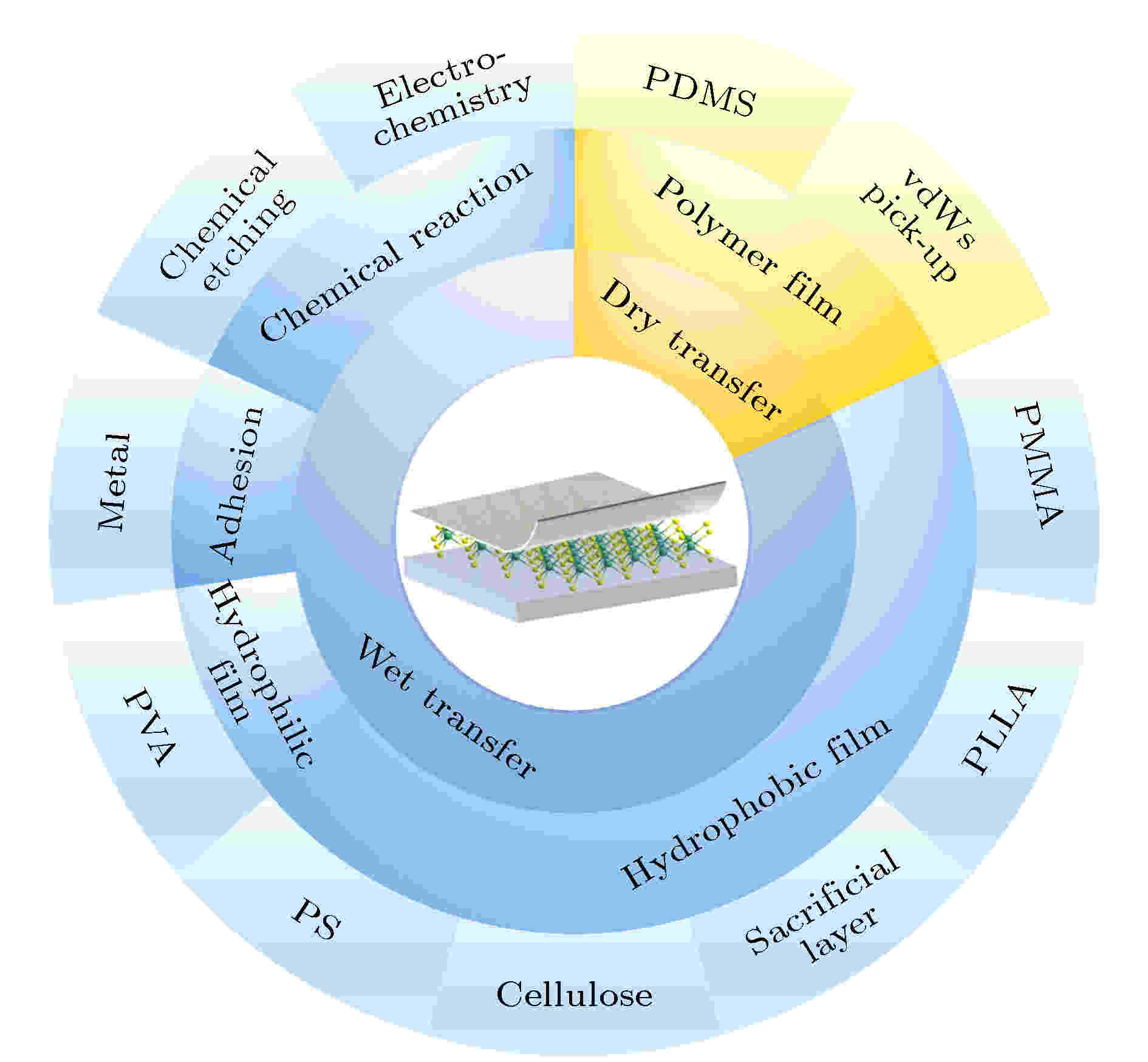
2021, 70 (2): 028201.
doi: 10.7498/aps.70.20201425
Abstract +
The advent of two-dimensional (2D) materials, a family of materials with atomic thickness and van der Waals (vdWs) interlayer interactions, offers a new opportunity for developing electronics and optoelectronics. For example, semiconducting 2D materials are promising candidates for extending the Moore's Law. Typical 2D materials, such as graphene, hexagonal boron nitride (h-BN), black phosphorus (BP), transition metal dichalcogenides (TMDs), and their heterostrcutures present unique properties, arousing worldwide interest. In this review the current progress of the state-of-the-art transfer methods for 2D materials and their heterostructures is summarized. The reported dry and wet transfer methods, with hydrophilic or hydrophobic polymer film assistance, are commonly used for physical stacking to prepare atomically sharp vdWs heterostructure with clear interfaces. Compared with the bottom-up synthesis of 2D heterostructures using molecular beam epitaxy (MBE) or chemical vapor deposition (CVD), the construction of 2D heterostructures by transfer methods can be implemented into a curved or uneven substrate which is suitable for pressure sensing, piezoelectric conversion as well as other physical properties’ research. Moreover, the transfer of 2D materials with inert gas protected or in vacuum operation can protect moisture-sensitive and oxygen-sensitive 2D materials from degerating and also yield interfaces with no impurities. The efficient and non-destructive large-area transfer technology provides a powerful technical guarantee for constructing the 2D heterostructures and exploring the intrinsic physical and chemical characteristics of materials. Further development of transfer technology can greatly facilitate the applications of 2D materials in high-temperature superconductors, topological insulators, low-energy devices, spin-valley polarization, twistronics, memristors, and other fields.

- 1
- 2
- 3
- 4
- 5
- ...
- 42
- 43














